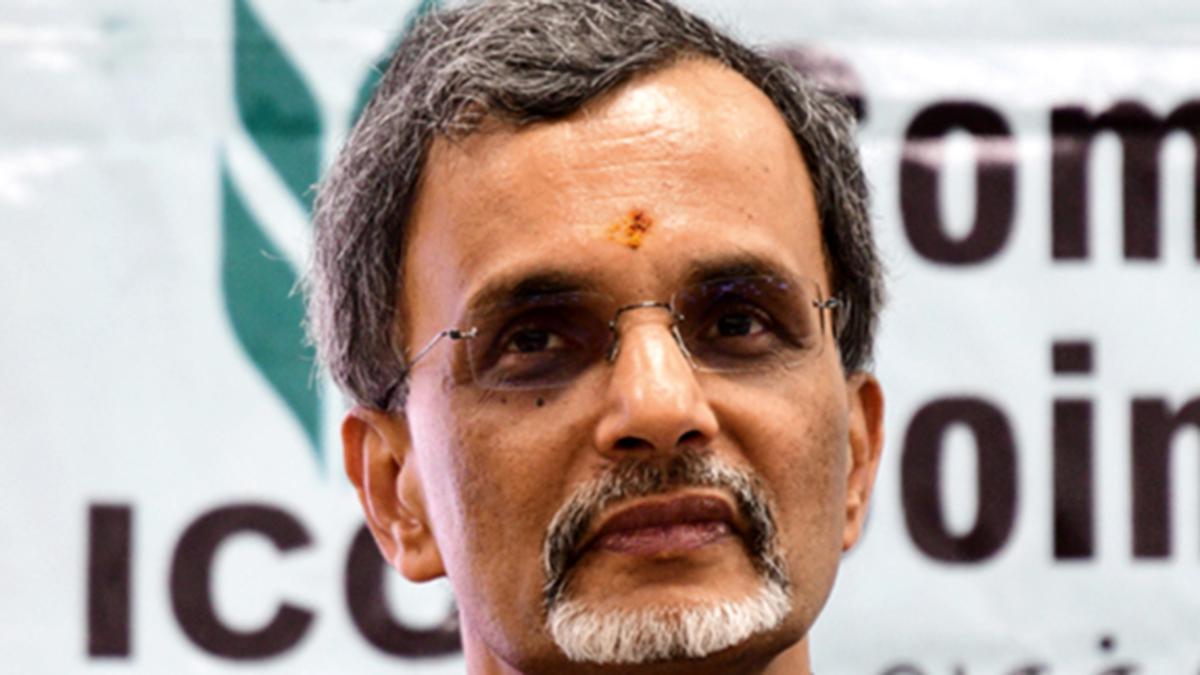
V Anantha Nageswaran, Chief Economic Advisor to the Government of India.
| Photo Credit: Siva SaravananS
Ahead of the Interim Union Budget, the Finance Ministry in a report on January 29 pegged India’s actual GDP development at nearer to 7% in 2024-25 with ‘considerable scope’ to outpace 7% by 2030, including that the economic system will hit $5 trillion within the subsequent three years, making it the third largest on this planet.
Prefacing a picture-perfect evaluate of the economic system’s “journey in the last ten years”, Chief Economic Advisor V Anantha Nageswaran burdened “not all growth is equal” and the marginal utility of seven% development when the world is struggling to develop 2% is “much higher” than 8-9% development achieved with the worldwide economic system rising 4%.
“One unit of growth in the latter circumstance is qualitatively superior to the former,” the CEA wrote in a report titled ‘The Indian Economy: A Review’ launched by the Department of Economic Affairs, which additionally provided a “brief sketch of the outlook for the economy in the coming years”.
The prognosis of seven% development within the coming 12 months, if actualised, would imply 7% or larger development for 4 years in a row, the CEA terming it “an impressive achievement, testifying to the resilience and potential of the Indian economy, which augurs well for the future. Mr. Nageswaran emphasised that this review was not ‘the Economic Survey of India which will come before the full Budget and after the general elections’.
The review split India’s growth story into two phases—1950 to 2014 and ‘2014-2024: Decade of transformative growth’—and noted that despite some positive developments, the state of the Indian economy was far from encouraging when Prime Minister Narendra Modi ‘assumed power in his first term in office’.
The economy had clocked lower than 5% growth of GDP at factor cost at constant prices for two consecutive years, 2012-13 and 2013-14, food inflation was high, and structural constraints such as difficulties in quick decisions on projects, ill-targeted subsidies cramping fiscal space for public investment, and a large informal sector, were denting growth, the Finance Ministry said.
“Since then, the Indian economy has undergone many structural reforms that have strengthened its macroeconomic fundamentals. These reforms have led to India emerging as the fastest-growing economy among G20 economies,” the ministry stated, noting that the economic system is producing jobs and a formidable post-pandemic restoration has seen city unemployment fee decline to six.6%. The CEA termed this a journey “from fragility to stability and strength.”
While the 64-page report outlined key reforms such because the introduction of the Goods and Services Tax and the Insolvency and Bankruptcy Code, together with the push for infrastructure constructing, it solely refers back to the Demonetisation train in passing, noting that it led to a surge in using non-cash types of cost.
While the Finance Ministry warned that “exporting one’s way to growth is no longer easy amid onshoring and friend-shoring of production, increasing vulnerabilities of global supply chains and the legacy of twin-global shocks,” it highlighted that home consumption has been sturdy and pushed the economic system to a 7%-plus development fee within the final three years. “The all-inclusive welfare approach of the government is expected to contribute to the enlargement of the consumption base through the expansion of the middle class,” it stated.
Source: www.thehindu.com



